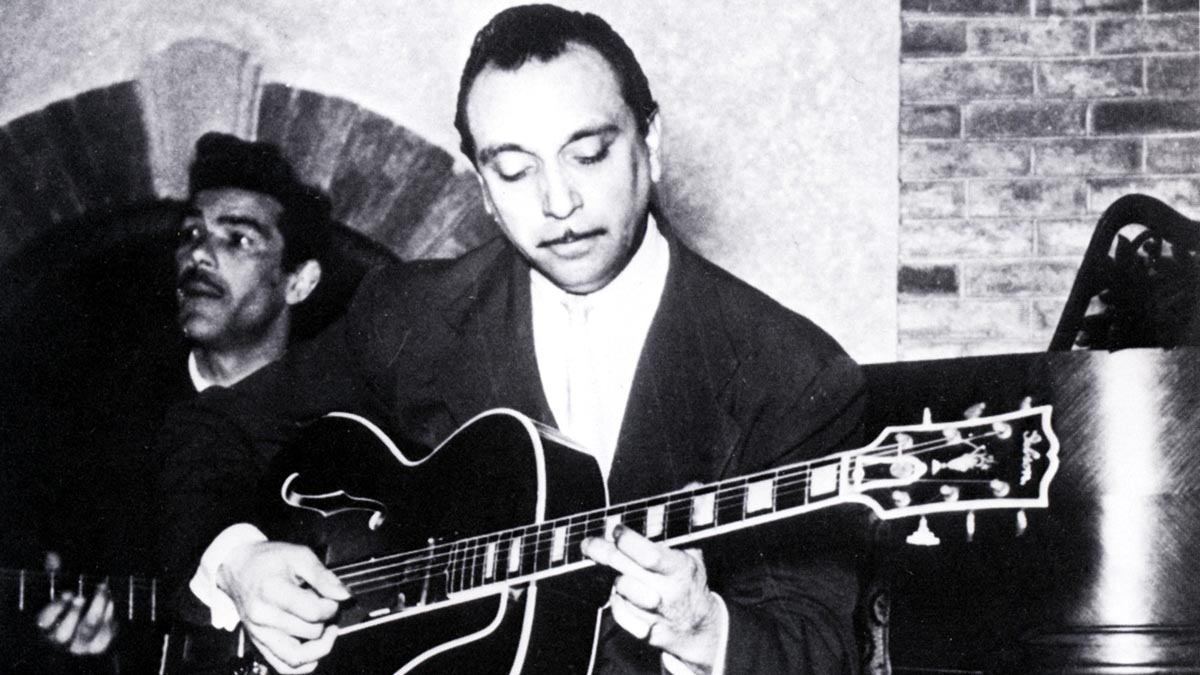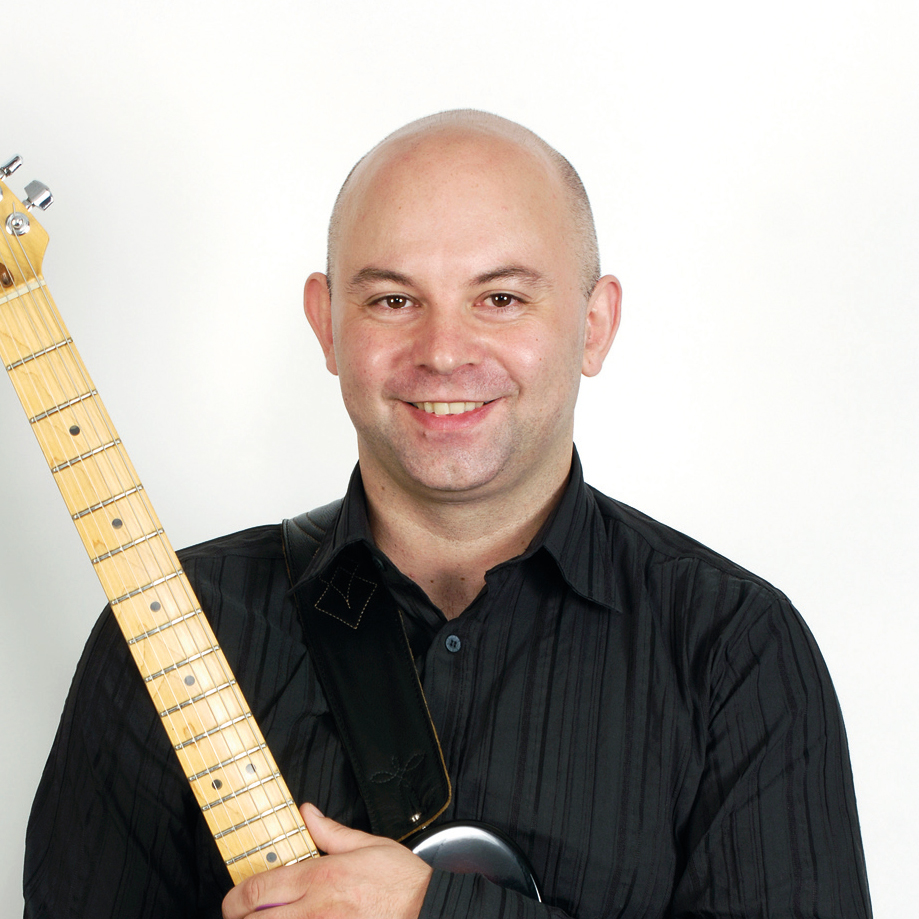“Django stretched the guitar imagination to its limit. He was the fastest, the most creative”: What Django Reinhardt can teach today’s blues players
Idolized by B.B. King and George Benson, Django Reinhardt was gypsy jazz guitar’s most legendary player. Improve your jazz vocabulary with this primer in his pyrotechnic style

Django Reinhardt was a true guitarist’s guitarist. As George Benson states, “Django stretched the guitar imagination to its limit. He was the fastest, the most creative, he had great rhythm, and he was a good composer too.”
B.B. King had a similar take on the Belgian virtuoso, “Django was one of my idols. His guitar seemed to talk. He played music that was sophisticated, but a layman like myself could still understand it.” The list of devoted Django enthusiasts goes on and on, and for extremely good reason. Simply put, he was a musical genius, and guitarist extraordinaire.
Born in 1910 in Liberchies into a family of Manouche gypsies, Django was prodigiously talented, and by age 13 he was performing with the street entertainers of Paris. In 1928 he survived a fire that left him with a severely disfigured left (fretting) hand, leaving him with only full use of its first and second fingers.
But with great determination he overcame this disability by evolving a completely new method for fingering, using just two digits for single notes and making limited use of the third and fourth fingers for playing certain chord shapes.
Inspired by the radical new artform of jazz, and the hot trumpet style of Louis Armstrong in particular, Django was soon performing again. In 1934 he formed the Quintette du Hot Club de France with violinist Stephane Grappelli. This was one of the first all-string jazz groups, featuring an unusual line-up of two rhythm guitars, violin, double bass and with Django on acoustic lead.
In 1946 he visited America as the guest of Duke Ellington, and on his return switched to electric guitar and began incorporating the influence of the radical new sound of bebop into his playing and compositions. While many associate Django’s music with the sound of guitar and violin in perfect harmony, he also made literally hundreds of recordings in other musical settings.
In this lesson, we’re looking at Django’s phenomenal playing against a 12-bar blues, a format he visited many times throughout his career in both major and minor guises.
All the latest guitar news, interviews, lessons, reviews, deals and more, direct to your inbox!
Reinhardt’s influences were a huge combination of styles, such as the traditional Romani manouche music from his family, juxtaposed with classical music from composers like Ravel, and particularly Debussy.
Let’s not forget the French bal-musette music that he performed extensively in his teens, all balanced alongside the music he heard from Louis Armstrong and other of Satchmo’s contemporaries that excited him so greatly.
Due to absorbing these disparate styles it’s almost inevitable that Django’s playing would sound nothing like an American guitarist, such as the great Charlie Christian. Texas-born Christian was equally incredible but with a completely opposing sound; warm and languid, not fiery and fierce like Reinhardt. Vive la difference! And enjoy.
Get the tone
Amp Settings: Gain 4, Bass 5, Middle 5, Treble 5, Reverb 5
Like later-era Reinhardt, I’m using a Selmer-style acoustic guitar with a magnetic pickup over the soundhole. However, any electric guitar will work. We’re after quite a bright tone so pick close to the bridge and leave the treble wide open at both your guitar and amp. A little bit of drive and grit in the tone can add that extra body, compression, depth and bite.
Example 1. Django lines
We begin with three choruses of a 12-bar blues, two in Major, one in Minor, full of trademark Reinhardt phrases. As always, compare the note selection with the associated chord symbols, as so much of Django’s playing is about making melodic choices relating to the harmony.
Major Chorus #1, 1a) features arpeggio action, with an explicit use of C major pentatonic (C-D-E-G-A) in bar 8. Our second chorus, 1b) uses harmonics to spell out Cmaj7 (C-E-G-B) moving to C7 in bar 5. Example 1c), our minor chorus, uses a three-against-four rhythmic phrasing device that is exploited heavily in the gypsy jazz genre.
Example 2. Django tools
This example negotiates major and minor blues forms, divided into six specific four-bar phrases, each indicative of an idea, concept or approach evident in Django’s style.
We see lower approach notes, the combination of upper and lower approaches, connected arpeggios, semitone bends and three-in-row consecutive picking patterns, before rounding off with a ‘one up, three down’ picking pattern that makes multiple appearances in Django’s vocabulary).
While each of these ideas function independently as a source for further study, you could also connect each line together to create another pair of choruses.
Example 3. Rhythm part (Major Chorus)
We end this look at Reinhardt’s playing by defining the rhythm part for the major chorus. It’s a great idea to acknowledge the upstroke grace note before each chord change, adding to the propulsion of the rhythm section and also assisting with the smooth transition from chord to chord.
Why not consider transcribing the minor chorus also? The staccato feel here is achieved by holding and releasing the pressure on each chord with the fretting hand, but you should feel free to experiment and explore the different rhythmic feels you can achieve by varying the duration of each chord.
John is Head of Guitar at BIMM London and a visiting lecturer for the University of West London (London College of Music) and Chester University. He's performed with artists including Billy Cobham (Miles Davis), John Williams, Frank Gambale (Chick Corea) and Carl Verheyen (Supertramp), and toured the world with John Jorgenson and Carl Palmer.

